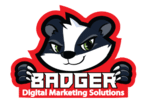“When you speak to everyone, you speak to no one.”
– Meredith Hill CEO, Institute for Travel Entrepreneurs
When you recognize that everyone is not your customer and figure out who your customer is, that’s when your business will transform. But how do you determine WHO your customers are? This is where defining your target audience comes in.
What is a target audience?
A target audience is a specific group of customers most likely interested in or to respond to your marketing initiatives. Your business may have several target audiences, depending on the products or services you’re promoting. Each target audience has specific wants and needs, and marketing plans are devised to attract each audience.
The target audience should not be confused with the target market, as the terms are similar but not interchangeable. A target market breaks down a large market into smaller segments and consists of customers with common behaviors and characteristics. A target audience is a subset of the target market.
Why is it important to identify a target audience?
In an effective marketing plan, the first step is identifying and understanding your target audience. Targeting the right audience ensures your marketing efforts lead to increased customer engagement and higher sales or conversions.
When you know your target audience, you create stronger marketing messages that speak directly to your customers.
How do I identify my target audience?
Create an ideal customer profile
The first step in identifying your target audience is creating an ideal customer profile, also known as a buyer persona. These are the consumers most likely to have interest in your products or services and include the following characteristics:
- Age. Customers in different age groups will respond differently to the design and marketing of your products. A millennial won’t have the same reaction to your messaging as a baby boomer.
- Gender. Depending on the products or services offered, gender plays a role in how your audience responds. The wants and needs vary greatly between the genders, and not recognizing this can minimize campaign effectiveness.
- Income. The amount of disposable income your customers have directly impacts your marketing campaigns. Customers with expendable income may gravitate to products or services that emphasize luxury, while customers in lower-income brackets may respond better to money-saving offerings.
- Location. In general, customers in urban areas have different buying habits than those living in rural areas. Where your customers live has an influence on buying preferences.
Conduct market research
Through market research, you’re able to learn about your target audience’s purchasing habits. The most common methods include:
- Surveys. Surveys allow you to gather useful data directly from your customers such as favorite products or services. You then can use the feedback when planning your next marketing campaign.
- Interviews. A more traditional approach, interviews provide you with direct and candid responses regarding products and marketing strategies.
- Focus groups. Through discussions and Q&A sessions, you can receive valuable insight from people who match your customer profile.
Reevaluate your products and services
Once you have a newly created customer profile, the next step is to review your offerings from a fresh perspective. With your target audience in mind, ask the following questions:
- What products or services are most likely to attract new customers?
- Are there products or services that could discourage new customers?
- What offerings should be the focus of my marketing efforts?
- How can I use images, copywriting, and customer testimonials to create my messaging?
The answers to these questions provide valuable insights into your marketing strategies. As the marketplace evolves, your customer profile might as well. Conduct market research and refine your customer profile once or twice per year to stay ahead of your competition.
Research your competition
By observing what your competitors are doing, you can discover what strategies are effective and how you can implement them as part of your marketing plan. When scoping out the competition, here are some areas to focus on:
- Social media. Researching your competition’s social media sites (i.e. Facebook, Instagram, LinkedIn, TikTok) allows you to see what content receives the most engagement. Look at what content they post, the frequency of posts, and what influencers they partner with across their social channels. Since there is already an interested target audience, you can reach similar audiences with your content.
- Customer pain points. Pain points are the problems or issues your target audience is dealing with or looking to solve. Knowing your customer’s pain points allows you to market your offerings as a solution.
Leverage customer data
When creating your marketing plans, don’t overlook the insights and information you have from existing customers. Using the following data can help you implement a more effective marketing strategy:
- Google Analytics. Google Analytics provides insight into the age and gender of your target audience. The data is then broken down into in-market segments, allowing you to gain valuable audience insights and create more relevant content to increase engagement and sales.
- CRM. Software-based customer relationship management (CRM) systems allow businesses to manage their interactions with potential customers. Information including name, contact information, purchases, and other data is stored within a CRM. While CRM analytics offer valuable insights into customers at a glance, they also help identify purchasing behaviors including the number of interactions before purchase and preferred social platforms.
Badger Digital Marketing Solutions offers a variety of services to help create the perfect marketing strategy for you, including geo targeting, social media marketing, search engine optimization, reputation management, and much, much more. With decades of digital marketing experience, we help determine your best options for maximizing your online presence that deliver results. Get started on your next project by completing our online contact form today!
Sources:
https://www.marketingevolution.com/marketing-essentials/target-audience
https://cmasolutions.com/blog/5-ways-to-identify-the-right-target-audience-for-your-brand/
https://www.inc.com/guides/2010/06/defining-your-target-market.html















